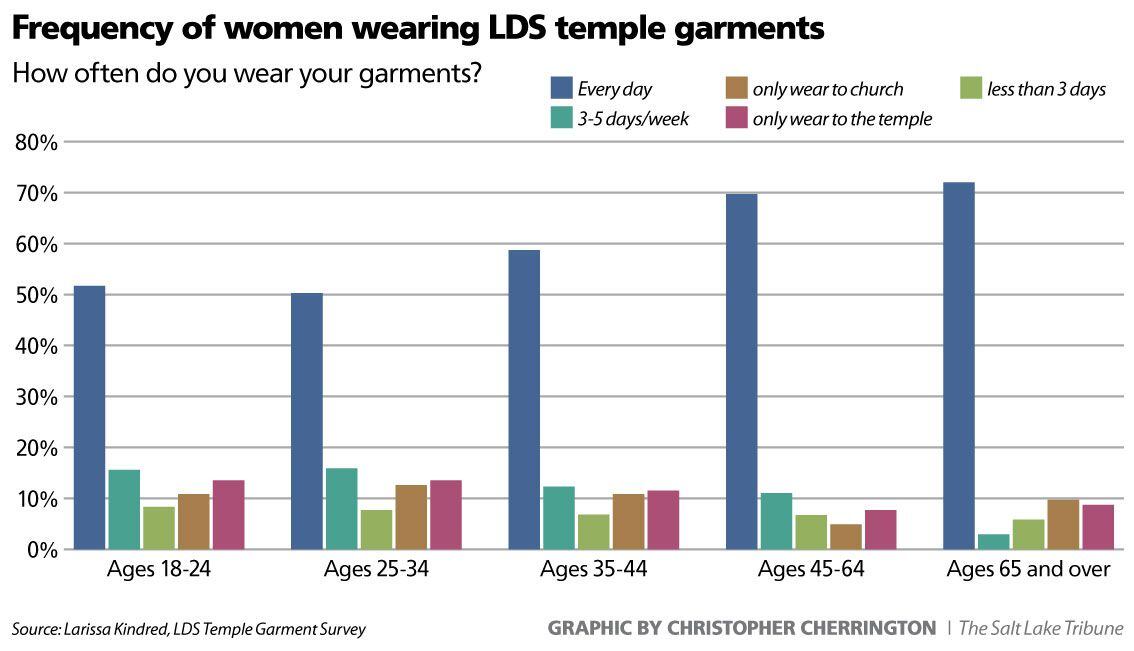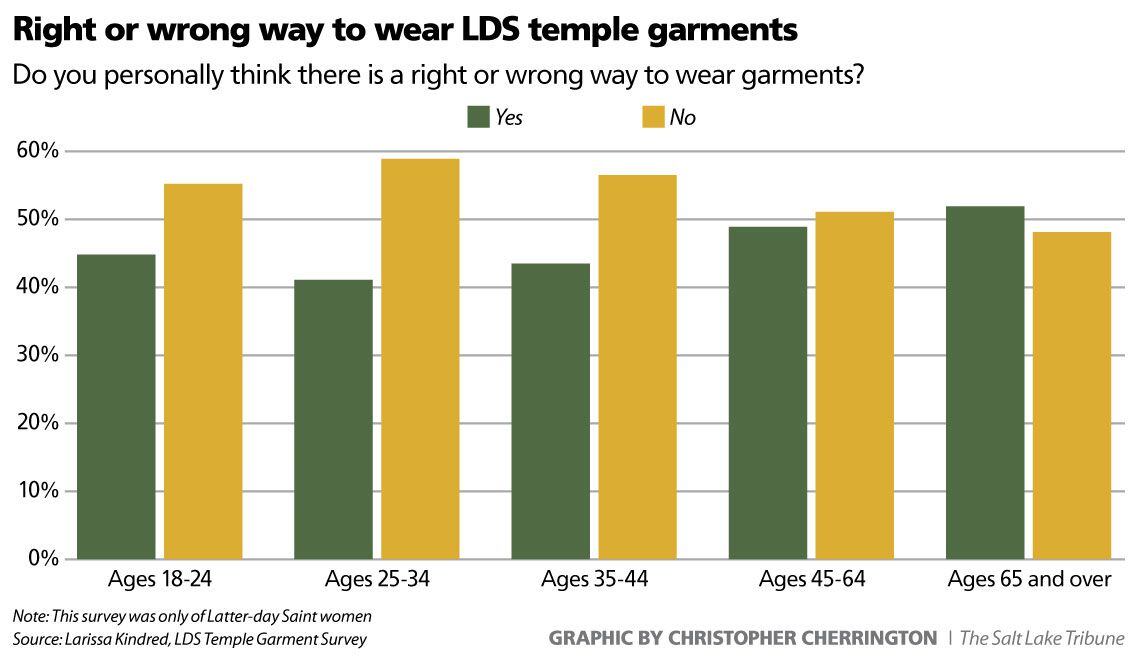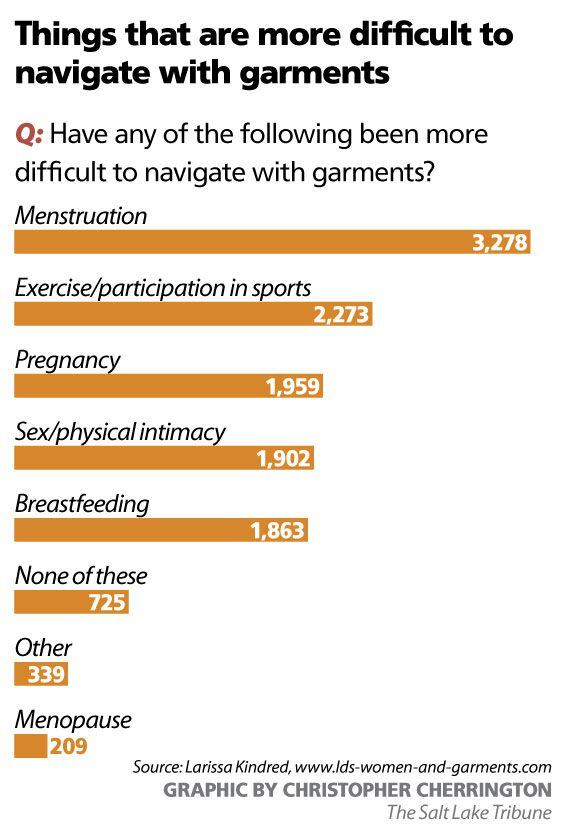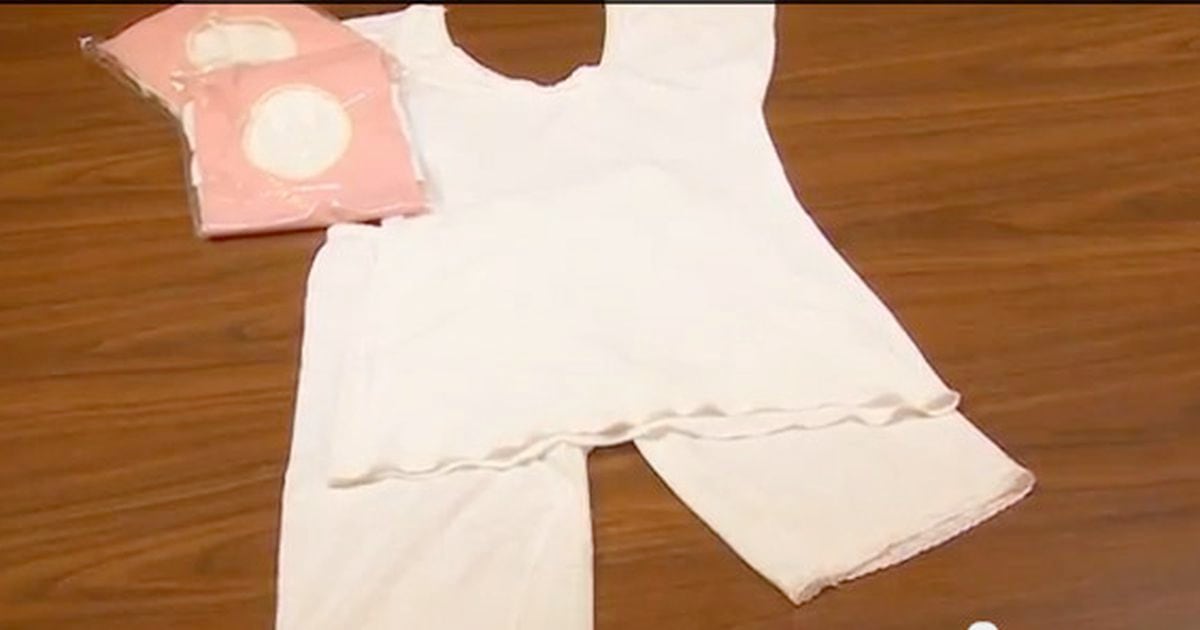Brace yourselves, nonconforming Latter-day Saint women.
Leaders soon will send an updated question to members of The Church of Jesus Christ of Latter-day Saints who want to enter one of the faith’s temples, reemphasizing that they should wear their sacred underwear as instructed.
General authority Seventy Kevin Hamilton reportedly said as much during a recent stake conference in Elk Grove, Calif.
According to several women who attended the regional gathering, Hamilton informed members that, unlike the faith’s current temple recommend question, the new one won’t leave wearing garments up to personal interpretation.
Hamilton, who is on a committee studying possible redesign of garments, told the assembled lay leaders that too many younger women wear them mostly on Sundays and when attending the temple, recalled conferencegoer Colleen Speer, rather than every day.
“The temple garment is a sacred part of the worship of followers of Jesus Christ. Official announcements related to temple matters come from church headquarters and are reflected in the General Handbook,” spokesperson Doug Andersen said Friday. “Anyone seeking guidance about the wearing of the temple garment should refer to their local leaders or resources available on the church website.”
What the recommend question says now
Right now, the online handbook directs leaders to ask prospective templegoers if they wear the garment “as instructed in the endowment.”
It states that “the garment should be worn beneath the outer clothing. It should not be removed for activities that can reasonably be done while wearing the garment, and it should not be modified to accommodate different styles of clothing.”
The handbook adds that “members should seek the guidance of the Holy Spirit to answer personal questions about wearing the garment.”
Hamilton said many younger women are opting for “yoga pants” during the week, Speer recalled.
Translation: Women don’t wear garments under yoga pants.
In response to such individual choices, Speer said the authority declared: “There is only one covenant path.”
Speer bristled at the suggestion that those who choose to wear garments in their own way are less faithful.
“Why are we afraid of people showing their religion differently?” Speer said in an interview. “It doesn’t mean they don’t value their covenants or care about God. If that’s how they feel, let them do it.”
Lecturing, scolding or judging sends the message, she said, “if I can’t wear garments in the prescribed way, I’m not welcome in the church.”
It’s increasingly clear that more and more members, particularly women, are wearing garments when, where and how they want, while fully participating in the communal life of the church, including temple worship.
And that, said Larissa Kindred, a graduate student in mental health counseling at the University of Massachusetts Boston who has surveyed members about garments, is a “window into the social aspect of Mormonism.”
‘Between me and God’
The Utah-based faith seems to be in a “war” between progression and regression on garments, the researcher said, between allowing individual choice and rigid, “right way” insistence. The counsel — typically given in the temple — has not been standardized, Kindred said, so it can provide leeway.
In the past, most people didn’t talk with others about their underwear, so “issues thrived in silence,” she said. “Women didn’t tell others about garments causing yeast infections. They couldn’t voice it with anyone.”
These days, members are more open and internet conversations can validate multiple choices. At the same time, the church has benefited from not talking about garments too much, she said, rather than “cracking down.”
“If women want to wear them on Sunday or when they go to the temple,” Kindred said, the church still has “achieved its goal of making them special and wonderful.”
But if women are told there is only one right way to wear them, she said, some might push back “and it can erode their faith.”
A 30-something Salt Lake City mom stopped wearing her garments after her first pregnancy.
“It was a practical thing,” said the mother, who declined to use her name to avoid judgment. “They felt cumbersome and unsightly, and I wanted to be more comfortable in my clothes.”
It wasn’t about leaving the church, though. She’s still all-in.
“It’s between me and God,” she declared. “If I felt pressured to wear them all the time, it would make me more resentful. Paradoxically, I feel closer to God if I am freer in my personal choices, if I can do this religion how I want. I don’t think this should keep me from participating.”
She is hardly alone in those feelings.
Research supports it

Kindred, a former Latter-day Saint, created an online “snowball survey,” reaching out to women on a variety of Latter-day Saint-related social media sites with focuses on, say, motherhood, sexuality and marriage.
Within two weeks, Kindred received more than 8,500 responses from women ranging from traditional/devout believers to progressives to former members.
One question asked about how often they wear garments. In the oldest group (65 and over), 72% don them every day. That number barely tops 50% for those ages 18 to 34.
“Garments seem to be a major dividing topic between traditional and progressive members,” Kindred said. Some 70% of tradition/devout members say there is one right way to wear garments, and only 28% of progressive members view the practice like that.

Even some self-described traditional/devout members are more flexible on the topic than they used to be.
“As the years have gone by, I’ve relaxed in my ability to choose when I feel it’s appropriate to wear and not wear them,” wrote one such woman between 45 and 64. “For a long time I felt they always needed to be worn and would have some guilt or judgments toward others in how they choose to wear them.”
Through the years, “I have grown in my ability to understand what works best for me,” the respondent wrote, “and how I feel and also [grown in] allowing others to choose what works best for them.”
Physical and cultural
Even for Latter-day Saint women who heed the church’s guidelines, it can still be tough to find clothing, especially dresses, that work with garments.
Last year, a By Common Consent blogger looked for “garment-friendly” dresses at macys.com. Of the 8,160 off-the-rack items, the writer discovered (given certain parameters), 619 could reasonably cover the covenant underwear. That’s fewer than 8% of the total.
That percentage drops even further, to 4%, for formal wear.
And that’s just one store in the United States. What about other countries, especially those with high temperatures?
Afton Southam Parker, a mother of five who was raised in the church and has lived in Uganda and Thailand, told The New York Times that “everybody I talked to was getting some kind of rash or infection.”
Parker said she had met with a church designer about her garment concerns for women, including menstruation, pregnancy and breastfeeding.

And questions of modesty vary from country to country. In India, for example, women often wear saris, which cover their shoulders but not their midriffs.
So which is more modest? asked the Salt Lake City mom.
Garments reflect a Western “view of modesty,” she said. “Other perspectives need to be considered as we become a global faith.”
‘Casual and even cavalier’
It seems Latter-day Saint authorities believe there is a problem with current patterns of garment use.
In a 2022 regional leadership broadcast, general authority Seventy Kevin Pearson, the Utah Area president, said the church was “dismayed at the casual and even cavalier way some [members] treat their temple covenants, including the casual and inconsistent wearing of the temple garment.”
Such noncompliance reflected “a growing sense of spiritual apathy and sporadic covenant keeping,” Pearson said, “that is becoming increasingly common among those who should know and do better.”
Wearing temple garments, Pearson said, has “nothing to do with personal preference and convenience and everything to do with commitment.”
Some commitment, Speer argued, is better than no commitment.
Younger women “may be wearing garments less,” she said, “but seem to be going to the temple more than when I was young.”
The church, she said, should take that as a win.
Editor’s note • This story is available to Salt Lake Tribune subscribers only. Thank you for supporting local journalism.


























